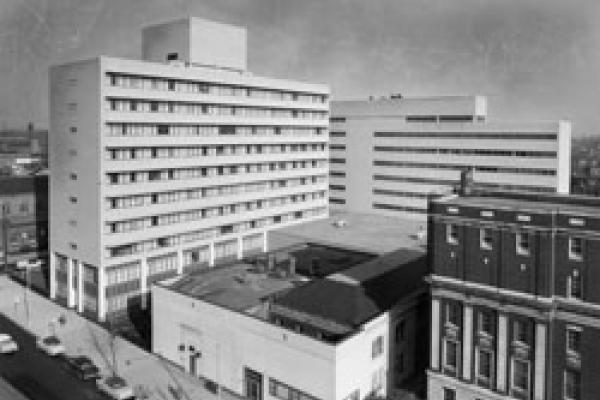At the core of Temple University Hospital's mission is the expert clinical care we offer to our patients, from our famous “firsts” to our many highly regarded programs.
The term “multi-hospital system” had not yet been invented, but that is exactly what Samaritan Hospital developed. Within 6 years of its founding, it had built another hospital on that empty lot next door—Greatheart, a maternity hospital—and acquired another community hospital: the 75-bed Garretson Hospital. In 1923, Samaritan added yet another hospital to its “system,” the Joseph Price Maternity Hospital (a second obstetrical hospital for women and newborns).
Fast-forward to today, when Temple University Hospital (TUH) also comprises of:
- Temple University Hospital – Jeanes Campus
- Temple University Hospital – Episcopal Campus
- Temple University Hospital – Northeastern Campus
- As part of Temple Health, TUH is affiliated with Fox Chase Cancer Center
With accidents and injuries common to factory work (and daily life) in those early days, Samaritan and Garretson developed expertise in something Temple is still known for: trauma care. In fact, Samaritan tended its first trauma patients on February 5, 1892— just four days after opening—when four men were injured in a factory explosion.
On August 8, 1902, when a balcony collapsed at Philadelphia Baseball Park, Samaritan mobilized its first mass-casualty response, admitting 70 patients in just one hour.
- That expertise is still a vital part of Temple University Hospital, all the way up through Philadelphia’s most recent mass-casualty event: the May 12, 2015 derailment of an Amtrak train that sent 64 injured passengers to TUH-Main and TUH-Episcopal, the greatest number and most severely injured of the victims.
- In 1987, Temple’s trauma program was among the first in the Commonwealth of Pennsylvania to be accredited. As of 2015, it has cared for more than 30,000 patients and provided invaluable training for generations of physicians the world over.
No discussion of our clinical care would be complete without considering some of TUH’s many firsts:
- 1940: Temple opened the first child psychiatry clinic in the nation.
- 1974: The world’s first university-based sports medicine center opened at Temple.
- 1984: Philadelphia’s first heart transplant was performed at Temple University Hospital; at the time, the program was one of only 12 in the United States. By 1994, Temple’s 67 heart transplants made it the nation’s number-one center for adult heart transplants for the second year in a row.
- 2012: Temple became the first hospital in the world to treat patients suffering from esophageal disease with cryotherapy (freezing diseased tissue to destroy and remove it).

